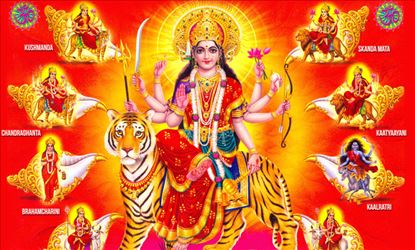
Accordingly the word Navaratri literally means nine nights in Sanskrit, nava meaning nine and ratri meaning nights. During these nine nights and ten days, nine forms of Shakti / Devi are worshiped. Meanwhile the seeds of inner renewal are sown, sprouting, watched & worshiped by devotees during Navratri and on the 8th, 9th and 10th days, Goddess Durga, Mahanavami and Vijayashtami are worshiped.
The tenth day that is commonly referred to as Vijayadashami or "Dussehra", celebrates victory of Shakti over Mahishasura, of Lord Rama over Ravana, and of Durga over demons like Madhu-Kaitav, Chanda-Munda and Shumbha-Nishumbha; that is victory of good over evil. Further the last 3 days of Navratri are called Durgashtami (8th day), Mahanavami (9th day) and Vijayadasami (10th day). On the morning of the tenth day there is a fire ceremony dedicated to Shiva, where the Navaratri participants have a chance to receive Shiva's blessing.

The beginning of spring and the beginning of autumn are considered to be
important junctions of climatic and solar influences. That is why these two
periods are taken as sacred opportunities for the worship of the Divine Mother
Durga. The dates of the festival are determined according to the lunar
calendar.




